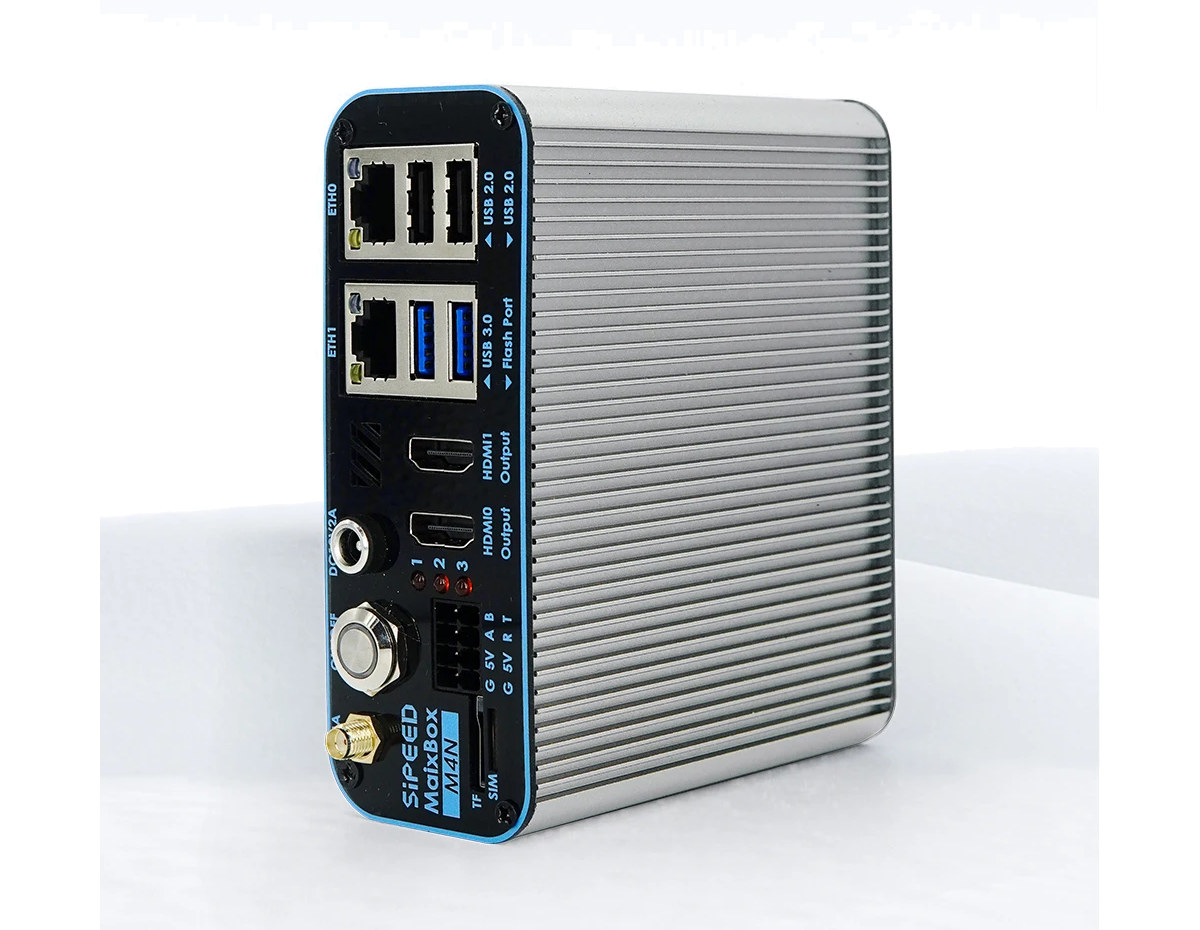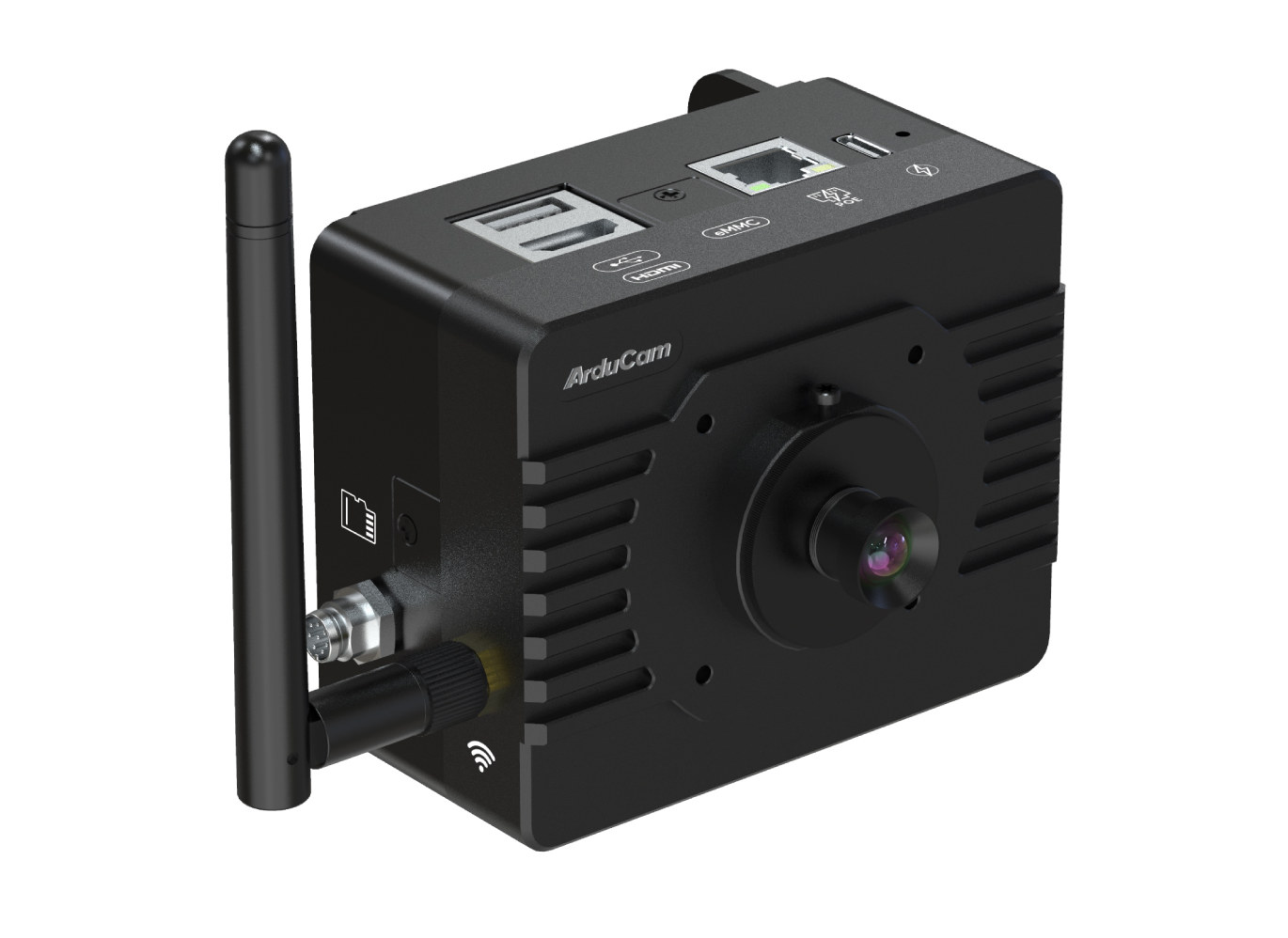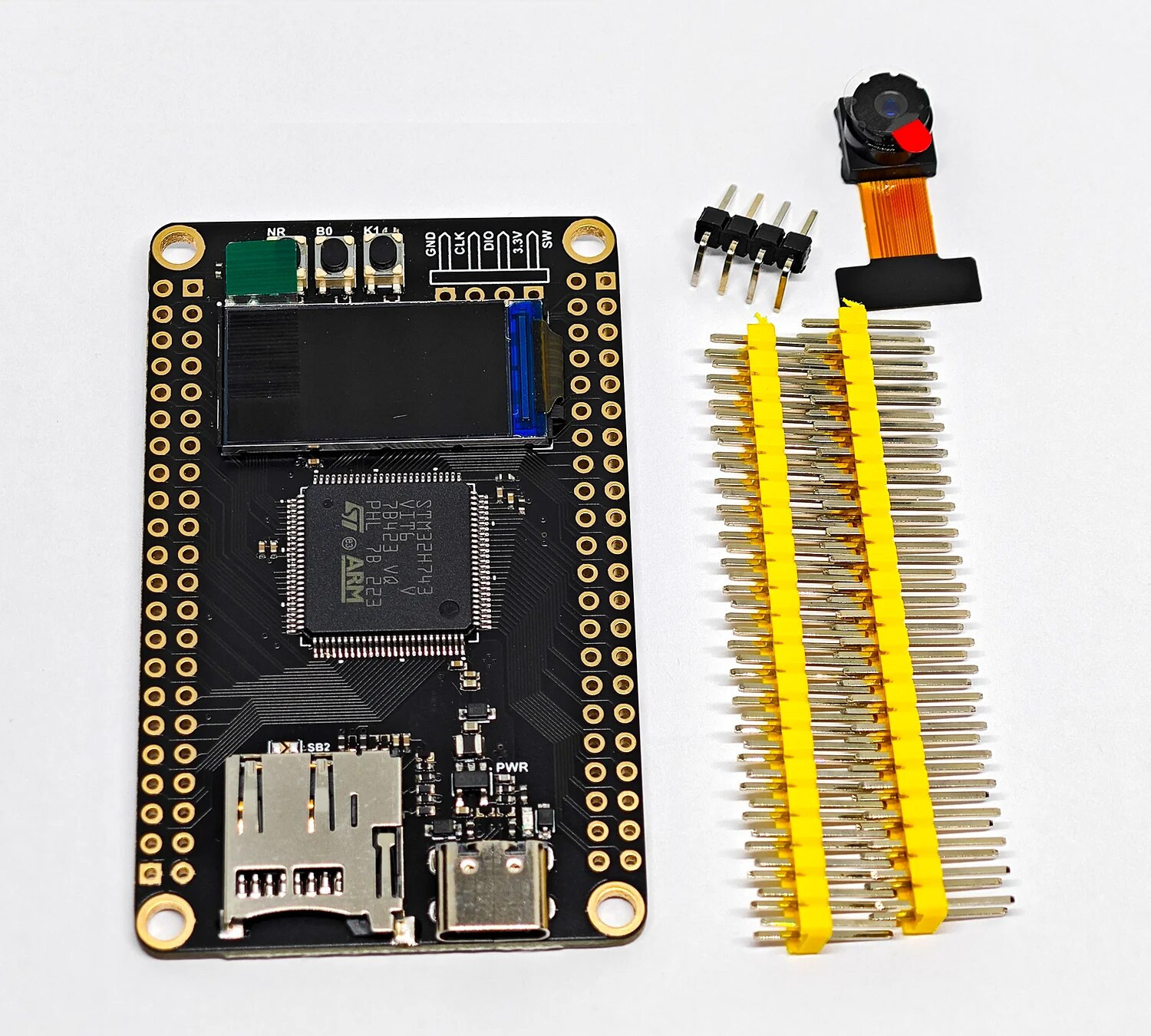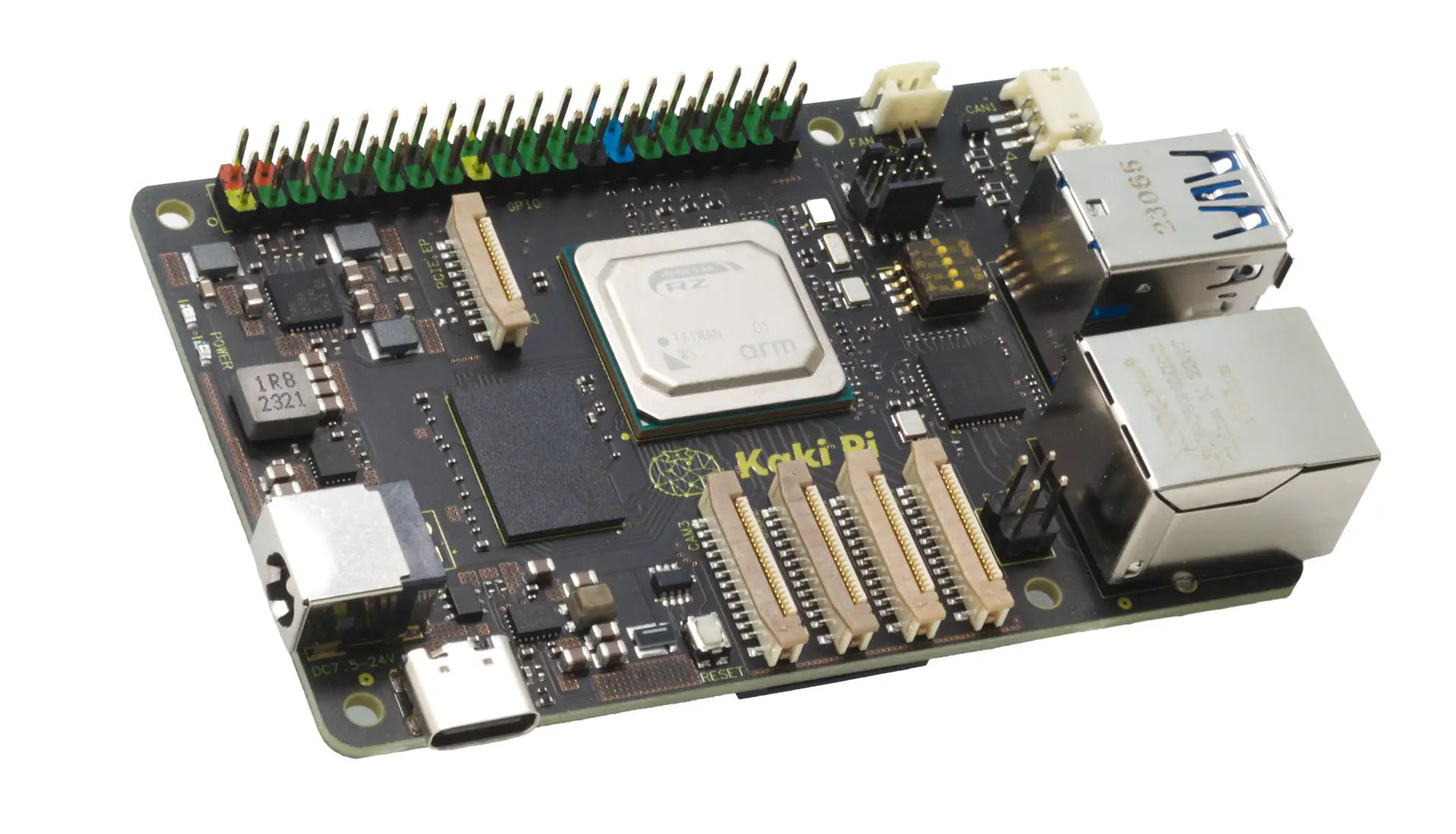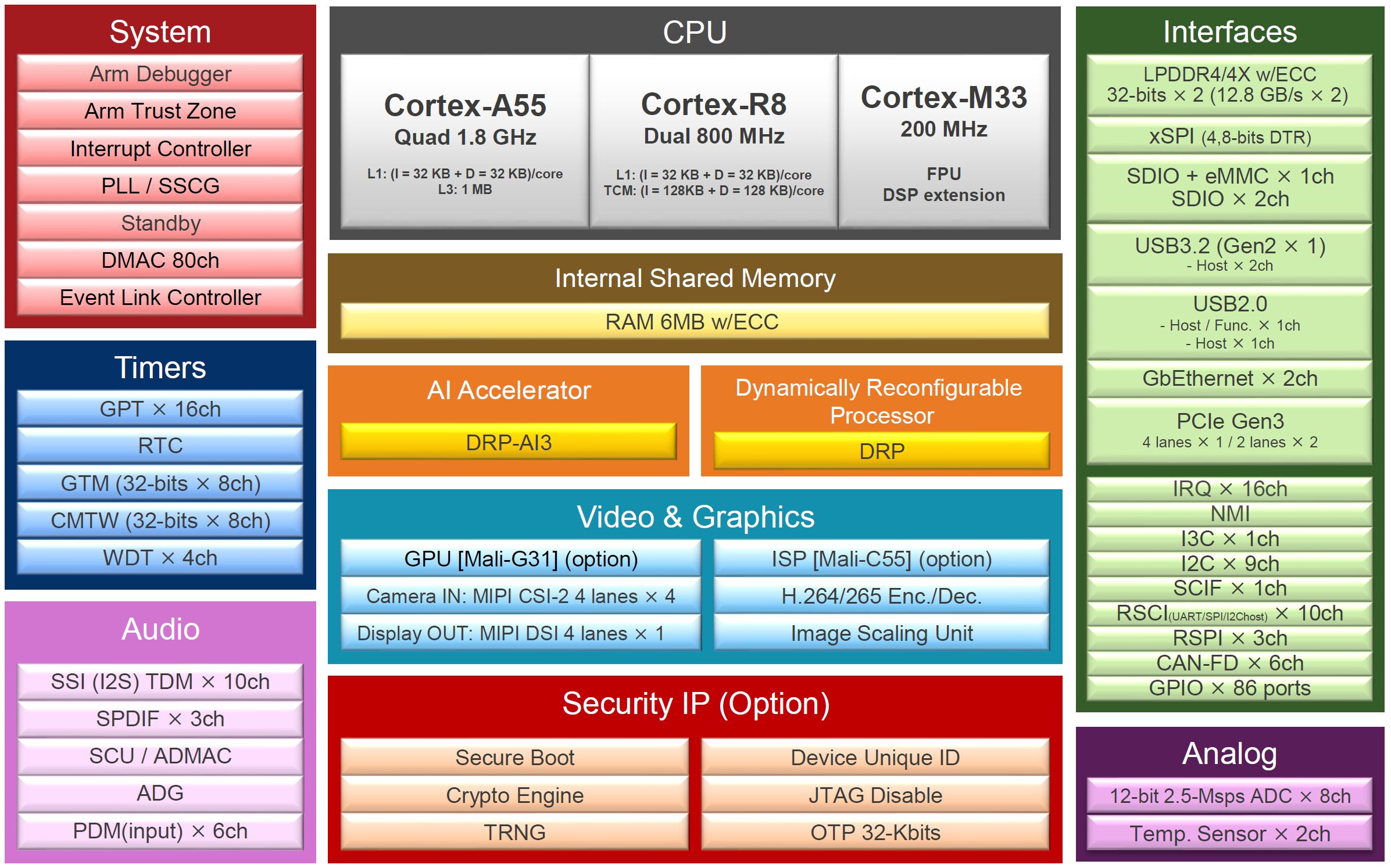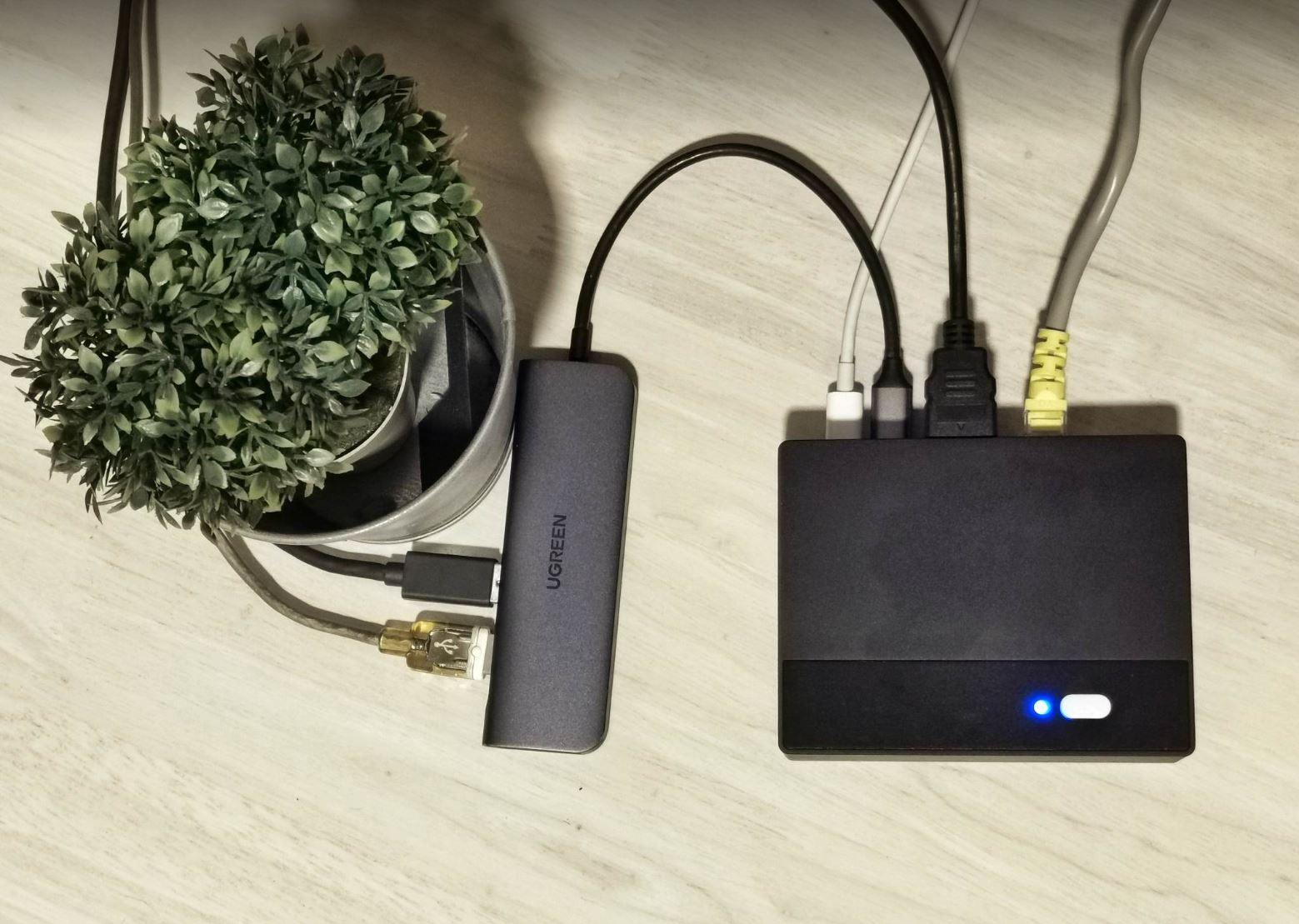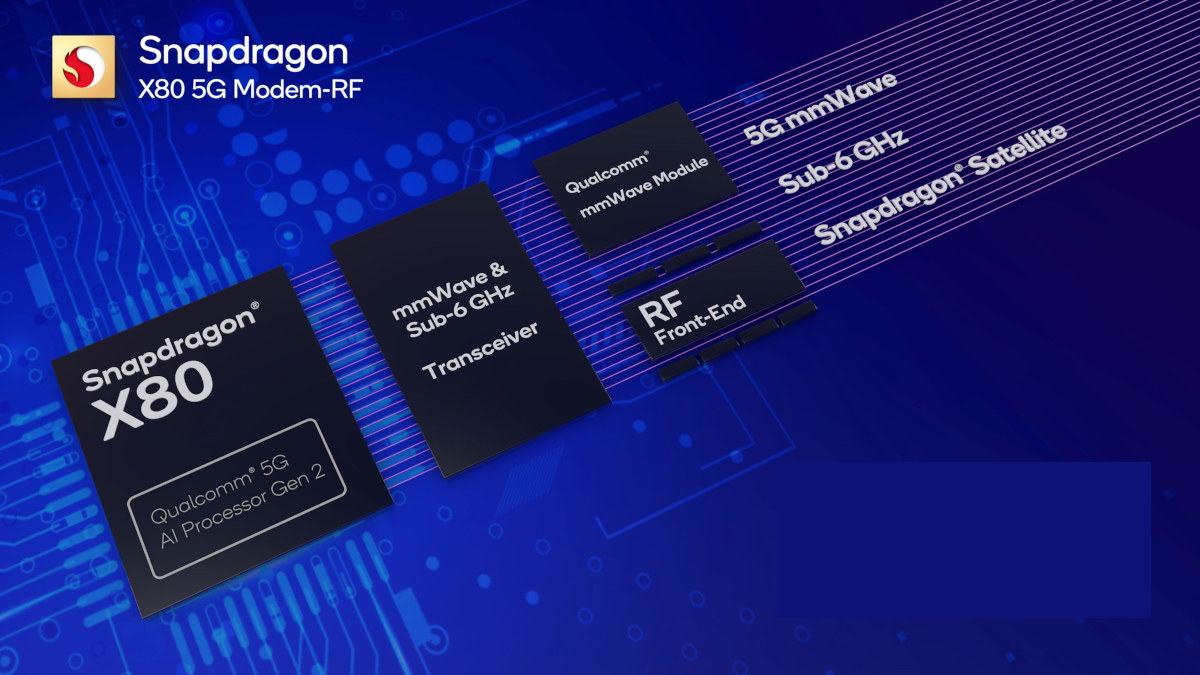Sipeed MaixBox M4N is an AI box for video analytics and computer vision equipped with an AXera-Pi Pro (AX650N) octa-core Cortex-A55 SoC with a 43.2 TOPS (INT4) or 10.8 TOPS (INT8) AI accelerator and an H.265/H2.64 video encoder/decoder supporting up to 32 1080p30 videos. The AI box is based on the Sipeed Maix-IV motherboard, an upgrade to the Maix-III devkit with an AX620A quad-core Cortex-A7 SoC with a 14.4 TOPS AI accelerator (INT4). It comes with 8GB RAM shared for Linux and the AI accelerator, 32GB eMMC flash and an M.2 SATA socket for storage, two HDMI outputs, two gigabit Ethernet ports, optional WiFi or 4G LTE mini PCIe module, a few USB ports, and RS232 and RS485 interfaces. Sipeed MaixBox M4N specifications: SoC – AXera AX650N CPU – Octa-core Arm Cortex-A55 @ 1.7 GHz with NEON support NPU – 43.2 TOPS @ INT4, 10.8 TOPS @ INT8 with support […]
Arducam KingKong – A Raspberry Pi CM4-based Edge AI camera with global shutter sensor, Myriad X AI accelerator
ArduCam KingKong is a Smart Edge AI camera based on the Raspberry Pi CM4 and system-on-module based on Intel Myriad X AI accelerator that follows the Raspberry Pi 5-powered Arducam PiINSIGHT camera introduced at the beginning of the year. The new product launch aims to provide a complete Raspberry Pi-based camera rather than an accessory for the Raspberry Pi 4/5. Smart cameras built around the Raspberry Pi CM4 are not new as we previously covered the EDATEC ED-AIC2020 IP67-rated industrial AI Edge camera and the StereoPi v2 stereoscopic camera used to create 3D video and 3D depth maps. The ArduCam KingKong adds another option suitable for computer vision applications with an AR0234 global shutter module, PoE support, and a CNC metal enclosure. ArduCam KingKong specifications: SoM – Raspberry Pi Compute Module 4 (CM4) by default CM4104000 Wireless 4GB RAM Lite (0GB eMMC). AI accelerator – Luxonis OAK SOM BW1099 based on Intel […]
WeAct STM32H743 Arm Cortex-M7 board ships with a 0.96-inch LCD and a choice of camera sensors
WeAct STM32H743 is a small MCU development board powered by a 480 MHz STMicro STM32H743VIT6 Cortex-M7 microcontroller and equipped with a small LCD and a camera connector taking OV2640, OV5640-AF, OV7670, or OV7725 camera sensors. The board comes with 2048KB flash and 1MB RAM built into the STM32H7 microcontroller, 8MB SPI flash, 8MB QSPI flash, a microSD for data storage, USB-C port for power and programming, a few buttons, and plenty of I/Os accessible through two 44-pin headers. WeAct STM32H743 specifications: MCU – STMicro STM32H743VIT6 Arm Cortex-M7 microcontroller at 480MHz with FPU, DSP, and MPU, 2048KB flash, 1MB RAM Storage – 8MB SPI Flash, 8MB QSPI Flash (bootable), microSD card socket Display – 0.96-inch TFT LCD based on ST7735 SPI display driver Camera 8-bit Digital Camera Interface (DCMI) with autofocus support OV2640 (1600×1200), OV5640-AF (2592×1944 with autofocus), OV7670 (640×480), or OV7725 (640×480) camera sensors are supported USB – 1x USB-C […]
Kaki Pi is a Raspberry Pi-inspired Renesas RZ/V2H AI SBC with four camera connectors, a PCIe 3.0 interface
Japanese company Yuridenki-Shokai Co. Ltd will soon launch the Kaki Pi single board computer [update Aug 2024: now called Kakip] based on the just-announced Renesas RZ/V2H Arm microprocessor with a powerful 80 TOPS AI accelerator, with Raspberry Pi-inspired form factor and features such as the 40-pin GPIO header, the same PCIe 3.0 connector as found in the Raspberry Pi 5, and four 22-pin MIPI CSI connectors that look to be compatible with the Raspberry Pi cameras. The board also comes with up to 8GB LPDDR4, a microSD card for the OS, a 22-pin MIPI DSI connector for a display, a gigabit Ethernet port, two USB 3.0 ports, two CAN Bus connectors, and other interfaces that make it suitable for robotics applications such as Autonomous Mobile Robots (AMR) and HSR (Human Support Robots) as well as IoT projects. Kaki Pi specifications: SoC – Renesas RZ/V2H CPU/MCU cores Quad-core Arm Cortex-A55 processor […]
Renesas RZ/V2H Cortex-A55/R8/M33 MPU comes with 80 TOPS AI accelerator for robotics and autonomous applications
The RZ/V2H is the latest addition to the Reneasas family of 32-bit and 64-bit microprocessors. Renesas RZ/V2H microprocessor features four Arm Cortex-A55 application processing cores, dual Arm Cortex-R8 real-time processing cores, and one Cortex-M33 core for system management, as well as an AI accelerator with up to 80 TOPS (sparse) of performance. The RZ/V2H MPU includes the third generation of Renesas’ dynamically reconfigurable processor for AI (DRP-AI3) accelerator, a staple of the RZ/V series. The DRP-AI accelerator can run complex image AI models at a power efficiency of 10 TOPS per watt (TOPS/W), as much as 10 times higher than conventional microprocessors. Additionally, the RZ/V2H has another DRP that can be used in image processing and robotics applications. The board also comes with PCIe Gen3, USB 3.2, and Gigabit Ethernet for high-speed applications such as autonomous robotics and factory automation machine vision. It offers a performance boost over previous products […]
Testing AI and LLM on Rockchip RK3588 using Mixtile Blade 3 SBC with 32GB RAM
We were interested in testing artificial intelligence (AI) and specifically large language models (LLM) on Rockchip RK3588 to see how the GPU and NPU could be leveraged to accelerate those and what kind of performance to expect. We had read that LLMs may be computing and memory-intensive, so we looked for a Rockchip RK3588 SBC with 32GB of RAM, and Mixtile – a company that develops hardware solutions for various applications including IoT, AI, and industrial gateways – kindly offered us a sample of their Mixtile Blade 3 pico-ITX SBC with 32 GB of RAM for this purpose. While the review focuses on using the RKNPU2 SDK with computer vision samples running on the 6 TOPS NPU, and a GPU-accelerated LLM test (since the NPU implementation is not ready yet), we also went through an unboxing to check out the hardware and a quick guide showing how to get started […]
Qualcomm unveils Snapdragon X80 5G modem with NB-NTN satellite connectivity, AI Hub, and FastConnect 7900 WiFi 7 chip
Mobile World Congress 2024 (MWC 2024) has just started, and Qualcomm had three major announcements with the introduction of the Snapdragon X80 5G modem with NB-NTN satellite connectivity, the Qualcomm AI Hub with over 75 AI models optimized for Snapdragon processors, and the FastConnect 7900 WiFi 7, Bluetooth, and Ultra Wideband (UWB) chip. Snapdragon X80 5G modem-RF system Snapdragon X80 5G modem specifications: Peak download speed – 10 Gbps Peak upload speed – 3.5 Gbps Cellular Modem-RF Specs – 10CC aggregation in mmWave, 5CC aggregation in 5G sub-6GHz Cellular Technology 5G NR, sub-6 GHz Dynamic Spectrum Sharing (DSS) LTE, WCDMA, LAA, TD-SCDMA, GSM/EDGE, CBRS mmWave, sub-6 carrier aggregation (FDD-FDD) sub-6 carrier aggregation (TDD-TDD), 5G FDD, 5G TDD, sub-6 carrier aggregation (FDD-TDD) 5G SA (standalone), 5G NSA (non-standalone) F + F ULCA, FDD UL MIMO, Switched Uplink, 3GPP R18-ready (5G Advanced-ready), 6x CA sub-6 downlink carrier aggregation, 1024-QAM sub-6, FR1 + […]
BrainChip’s Neuromorphic Akida Edge AI Box is now available for pre-orders at $799
BrainChip has recently opened preorders for their Akida Edge AI Box, built in partnership with VVDN Technologies. This box features an NXP i.MX 8M Plus SoC and two Akida AKD1000 neuromorphic processors for low-latency, high-throughput AI processing at the edge. The system features USB 3.0 and micro-USB ports, HDMI, 4GB LPDDR4 memory, 32GB eMMC with up to 1TB micro-SDXC expansion, dual-band Wi-Fi, and two gigabit Ethernet ports for external camera connections, all within a compact, passively-cooled chassis, powered by 12V DC. BrainChip Akida Edge AI Box Specifications: Host CPU – NXP i.MX 8M Plus Quad SOC with 64-bit Arm Cortex-A53 processor running at up to 1.8GHz AI/ML Accelerator – Dual Brainchip AKD1000 (Akida Chip) over PCIe for efficient AI processing Memory – 4GB LPDDR4 Storage 32GB eMMC flash MicroSD card slot for additional storage options Display Output – HDMI output supporting up to 3840 x 2160p30 resolutions with a pixel clock […]


